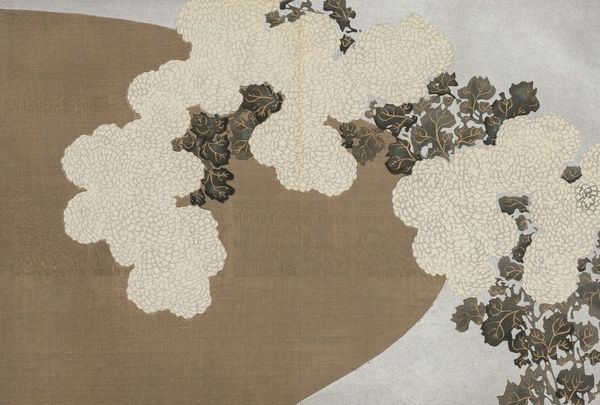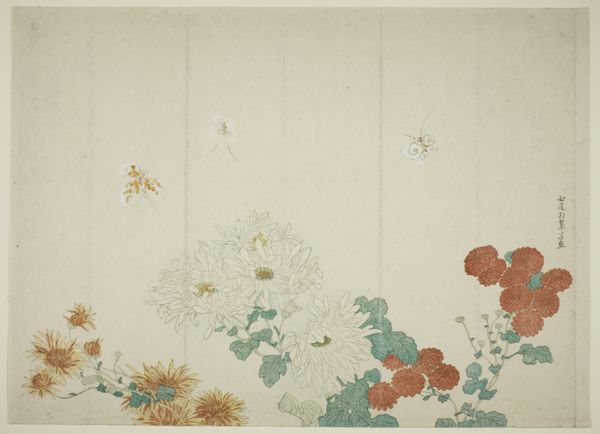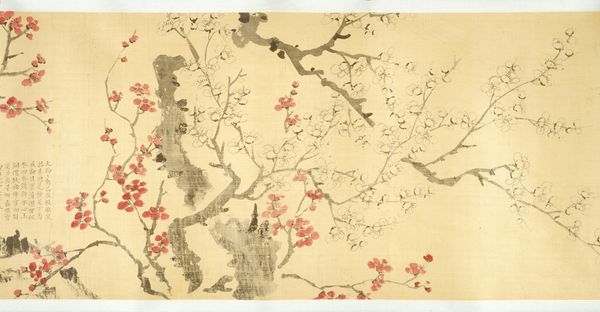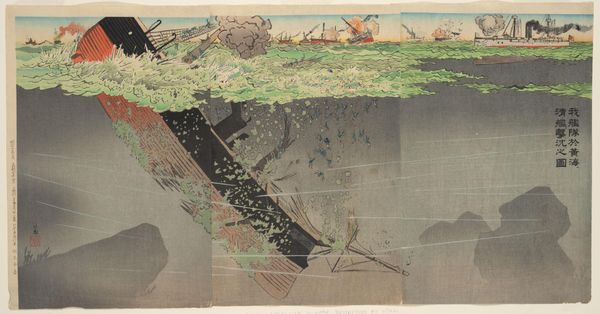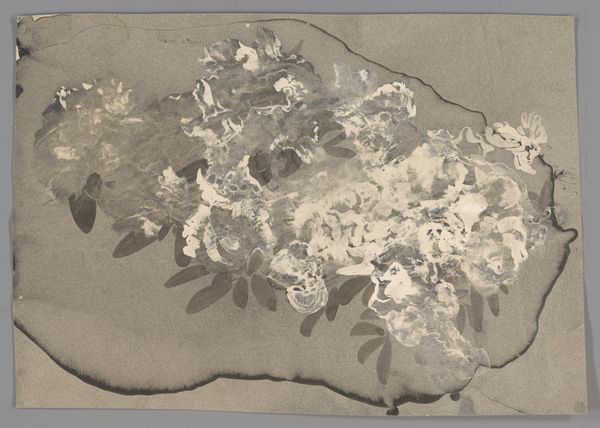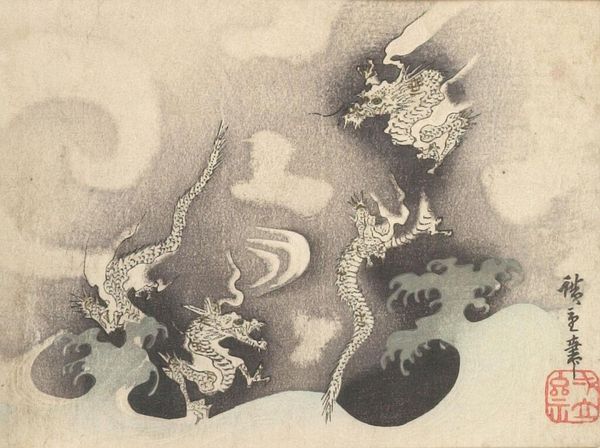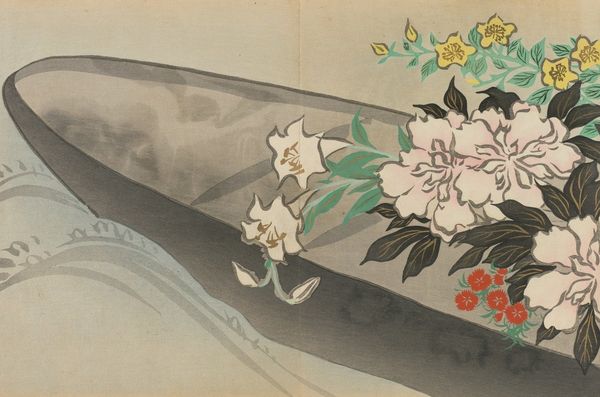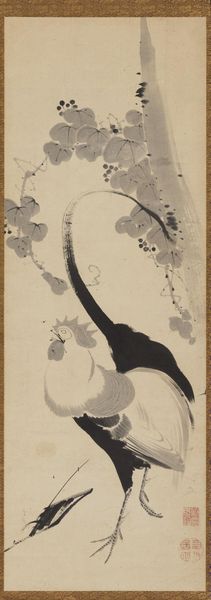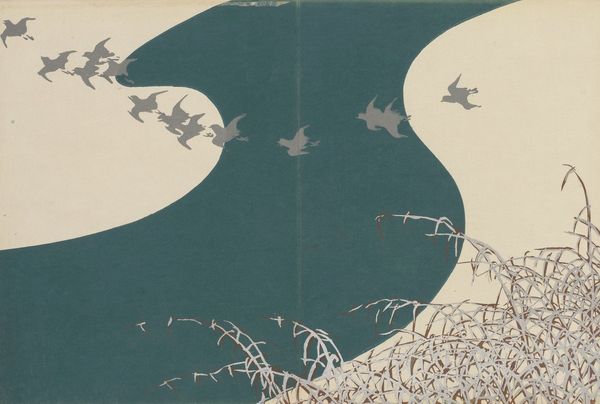
drawing, print
#
drawing
#
organic
#
art-nouveau
# print
#
asian-art
#
landscape
#
flower
#
organic pattern
#
pastel tone
Dimensions: height 302 mm, width 452 mm
Copyright: Rijks Museum: Open Domain
Curator: Welcome. Before us is "Chrysanten," possibly from 1909, by Kamisaka Sekka, part of the collection here at the Rijksmuseum. It appears to be a print, or perhaps a drawing of some kind, focused on the beauty of chrysanthemums. Editor: The overall impression is immediately serene. The limited palette—muted browns, grays, whites—gives it a subdued, almost dreamlike quality. And look at the careful distribution of the floral forms, almost cloud-like. Curator: Yes, Sekka’s embrace of the organic, in combination with flat planes, really defines its Art Nouveau spirit. Chrysanthemums themselves carry considerable symbolic weight, especially in Asian art; they often signify longevity and rejuvenation. It makes you consider how this connects with Japanese cultural ideals. Editor: That curved division in the background is interesting, almost echoing the shape of a rising or setting sun. It establishes distinct zones. What do you make of its function compositionally? Curator: I see it setting a duality: nature’s temporality set against a promise of endurance through art, perhaps? The floating flowers gain additional symbolic power set against the background's geometry, suggesting impermanence rising over stillness, similar to much Japanese landscape art. Editor: The texture within each flower head draws me in. The stippled effect creates a sense of volume and delicacy at the same time. It stops it from being a purely decorative, two-dimensional surface. Curator: And the artist avoids outlining; forms dissolve into the ground, don't they? It is all implied. This lends itself to readings where inner states are projected onto nature. Sekka’s careful technique is also notable when understanding Japonisme as filtered through Art Nouveau—East meets West in a unique form of expression. Editor: Looking at it closely has really made me appreciate the piece's subtle harmonies. It seemed simpler initially, but there's real depth there. Curator: Absolutely. A flower may symbolize life and renewal, but art ensures such beauty continues in cultural memory. It's the transformation of observed organic beauty that ensures its continued existence.
Comments
No comments
Be the first to comment and join the conversation on the ultimate creative platform.
